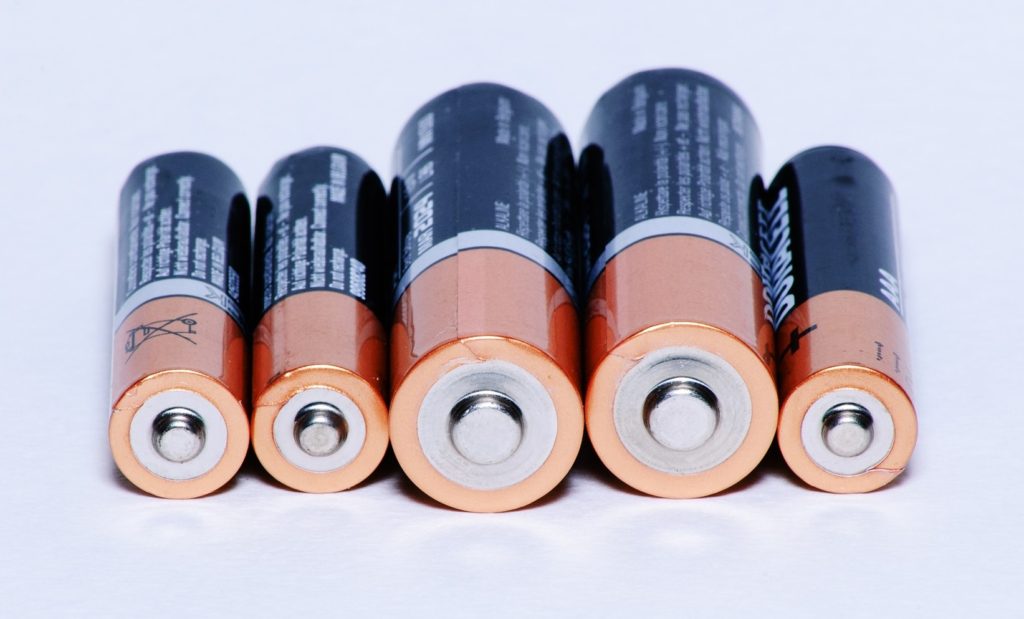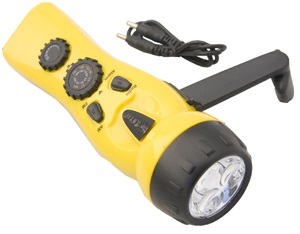How to Choose: Dynamo or Batteries for Your Earthquake Kit?
When it comes to dynamo (hand crank) radios and flashlights, opinions are often split. There are diehard enthusiasts who believe storing alkaline batteries for an emergency is the best route to survival, and others who put their faith in a trusty solar/crank unit. Our Quake Kit earthquake kits offer both options, and today we’re going to look at the pros and cons of each.
Alkaline Batteries – Pros
(This includes most replaceable batteries that you’d use for things like TV remotes.)

If stored properly many brands of alkaline batteries have a 5, or in some cases even 10 year shelf life. This makes it easy to switch out your batteries whenever you are updating the food and water in your kit. They’re also easily switched out if one battery in a set isn’t working.
Alkaline batteries are also available almost anywhere. Hardware stores, big box stores, and even gas stations regularly carry packs of many different types of batteries. They’re straightforward to install and provide instant power.
Alkaline Batteries – Cons
Batteries are great – until they’re not. In an emergency, shopping for replacements for a dead unit may not be an option. If supplies run low, or expire, or are damaged there might be no good way to replace your power supply.
Alkaline batteries can leak harmful acid on other elements of a kit, so it’s important that they be kept wrapped separately. Do not store them inside your electronics either as this can increase the likelihood of a leak and potentially damage your device.
If batteries are loose in a bag or container, and the connectors on either end bang together, there is a very small risk of a spark. This can cause fires, so storing batteries parallel to one another, or taping over the ends, can make a difference. This fire risk is also present with dead batteries.
Dynamo Flashlights/Radios – Pros
Dynamo powered units are very popular for emergency preparedness because if they are properly maintained they ensure you will always have access to light and communication when you need it. Dynamo refers to any device powered by movement – usually either cranking, squeezing, or shaking. Our high level home earthquake kits all contain dynamo radio/flashlight options.
Most modern dynamo units can also be charged by plugging in the included USB cord to a wall, car charger, or computer. This allows for quick top ups when these sources are available. When the unit is running on a low charge you can simply start cranking to top it up, creating no extra waste and helping the environment.
Dynamo Flashlights/Radios – Cons
We’ve all had the experience of pulling out an old crank radio only to find it has gone dead in storage and won’t hold a charge. This is because lithium batteries require periodic charging to maintain a long shelf life. If you are doing the recommended checks on your kit (twice a year – we recommend daylight savings time as a reminder) than this isn’t a problem. Just top up the charge every time you’re in your kit. If you’re more of a set-it and forget-it kit builder, dynamo might not be for you.
The other con of dynamo lights is that you need to work for the results. While some units are efficient, giving 30-60 minutes of decent light from a minute or two of cranking, some units are not up to that standard. Cheap units are especially notorious for only lighting up while you’re cranking which is far from ideal.
Summary
For those willing to do their research to find the right unit, and who maintain their kits regularly, crank radios are the ultimate way to ensure you’re never without power. If you’re willing to store batteries correctly and spend a little more now and again to change them out, that might be the best option for you.
So what does Quake Kit suggest? BOTH! And, heck, add solar while you’re at it. Our sister company, Total Prepare, stocks a variety of lights and radios that are both crank and solar powered, and even one unit that also takes batteries. You can never be too prepared, right?
Thank you for reading.
This article was written by Zenia Platten – Author of Tethered and emergency preparedness professional..


